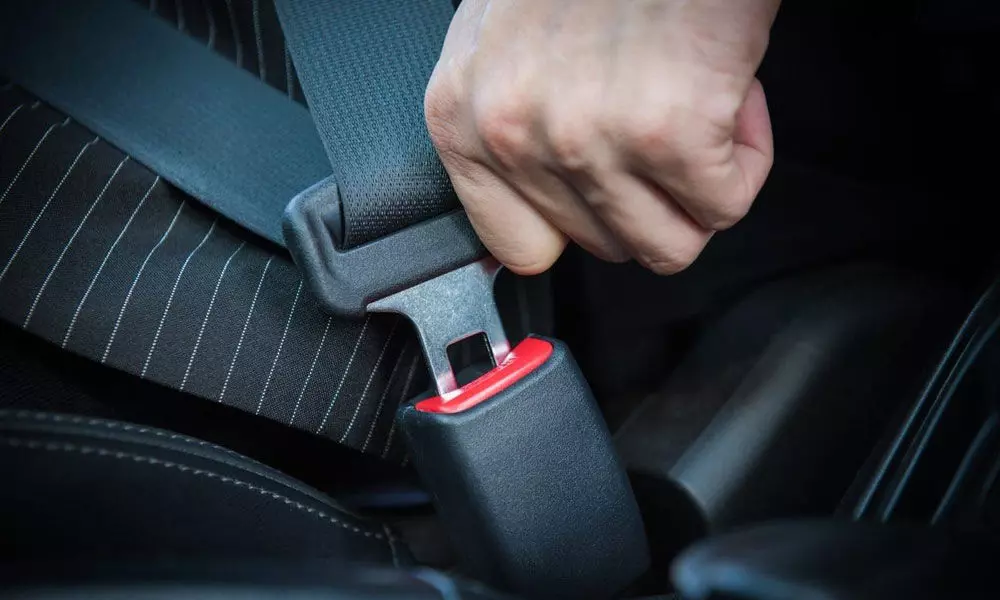Live
- Almonds: A Key to Healthy Living
- Priyanka Chopra steals hubby Nick Jonas’ jacket
- Demolition of illegal buildings in Whitefield amid public scepticism
- TCS recruits 52 PB Siddhartha students
- Mcap plunges by Rs 2.19 L cr
- Kenya cancels airport, energy deals
- Plans underway for green ammonia plant in Kakinada
- TG may review MoUs with Adani
- Lokayukta conducts raids on Mines and Geology Officer
- Minister Durgesh urged not to impose entry fees on tourists at beaches
Just In
Seat belt could save lives of rear passengers in car crashes: Doctors


Seat belt could save lives of rear passengers in car crashes: Doctors
According to World Health Organisation (WHO), wearing seat belt and child restraints is one of the most vital precautions that can prevent injuries in case of an accident.
Bengaluru: According to World Health Organisation (WHO), wearing seat belt and child restraints is one of the most vital precautions that can prevent injuries in case of an accident. It is mandatory for rear-seat passengers as well to wear seat belts as a basic safety measure. This one step can save lives in the event of an accident.
The case of seven-year-old Neeraj (name changed) highlights the importance of basic precautions. The boy who was sitting in the rear seat suffered multiple haemorrhages.
Neeraj and his parents were on the way to the Bengaluru airport from Mysuru to fly to their hometown, Gorakhpur when they met with an accident. While all the others in the car escaped with bruises, Neeraj suffered several injuries to the brain and rushed to Columbia Asia Hospital.
Speaking about the incident Dr. Avinash KM, Senior Consultant, Neurosurgery, Columbia Asia said, "The kid experienced a shearing force to his head due to the accident. Not wearing seat belt was the main reason for the boy suffering head injuries. As soon as he was brought to the ER, we immediately ran a CT scan which revealed multiple haemorrhage in the brain. Since Neeraj had continuous seizures, we gave him multiple medication and was kept on sedation."
Dr. Vishwanath Kamoji, Senior Consultant - Neonatologist and Paediatrician, Columbia Asia Hospital, Hebbal said, "Neeraj was rushed to the emergency room in the middle of the night and he was experiencing continuous seizures due to the brain injury. The CT scan showed a shearing stress with multifocal bleeding spots in the brain. We put the boy on ventilator immediately to control his seizures.
Although we wanted to extubate Neeraj, he continued to have seizures when we tried to reduce the medications. Therefore, we started three different anti-epileptic medicines which helped to extubate him after a week. After this gradually he regained consciousness and started to recognise and respond to his parents and brother. At the time of discharge, he was able to take semi solid food and his progress was good. Physiotherapists and speech language specialists helped him regain his tone, posture and speech. We have recommended a neuro rehabilitation and a constant follow up with multi-disciplinary team of doctors".
Neeraj is now discharged and recovering with his family's support.

© 2024 Hyderabad Media House Limited/The Hans India. All rights reserved. Powered by hocalwire.com






